Kadamba: Neolamarckia cadamba: Benefits, Remedies, Research, Side Effects
Kadamba- Neolamarckia cadamba, is a herb mentioned in the Ayurvedic pharmacopeia for the treatment of wounds, conjunctivitis, mouth ulcers, diarrhea, Irritable bowel syndrome and diseases related to the urinary tract.
Latin Name- Neolamarckia cadamba
Synonymous botanical names –
Nauclea cadamba Roxb.
Anthocephalus cadamba(Roxb.)
Anthocephalus indicus var.glabrescens H.L.Li
Anthocephalus morindifolius
Nauclea megaphylla
Neonauclea megaphylla(S.Moore) S.Moore
Samama cadamba (Roxb.)
Sarcocephalus cadamba
Family- Rubiaceae (Manjishta Kula)
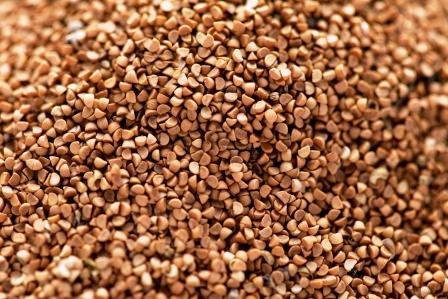
Table of Contents
Vernacular names
Names in different languages:
Hindi Name- Kadam
English Name- Burflower tree, Leichhardt pine, laran, kadam
Bengali Name- Kadamgach
Gujarathi Name- Kadamb
Marathi Name- Rajakadamba
Kannada Name- Kadamba
Tamil Name- Vellai kadambam
Sanskrit synonyms
Vritta pushpa- The flowers are round in shape
Halipriya, Haripriya – Liked by the farmers
Lalanapriya – liked by women
Suvasa – good fragrance
Priyaka- Looks pleasant to the eyes
Sindhupushpa- Available in Sindhu pradesha
Neepa, Pulaki, Kadambarya, Kutsitambha,
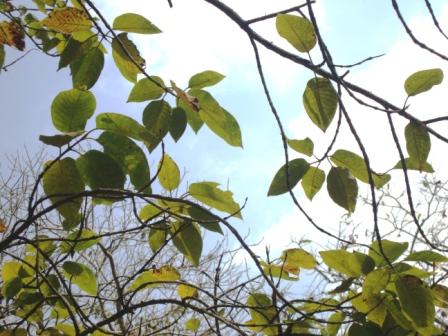
Kadamba is an evergreen, tropical tree native to South and Southeast Asia. A fully mature kadam tree can reach up to 45 m in height. It is a large tree with a broad crown and straight cylindrical bole. Kadam flowers are sweetly fragrant, red to orange in color, occurring in dense, globular heads of approximately 5.5 cm (2.2 in) diameter.
Classical categorization
Charaka Samhita –
Vedanasthapana – group of herbs that are used for pain relief
Shukrashodana – group of herbs that cleanse and detox semen, male and female reproductive systems
Vamanopaga – group of herbs useful in Vamana Panchakarma treatment
Sushruta Samhita- Nyagrodadi, Rodradi
Bhavaprakasha- Pushpa varga
Dhanvantari Nighantu- Amradi varga
Kaiyyadeva Nighantu- Oushadhi varga
Raja Nighantu- Prabadradi varga
Scientific classification
Kingdom: Plantae
Order: Gentianales
Family: Rubiaceae
Subfamily: Cinchonoideae
Tribe: Naucleeae
Genus: Neolamarckia
Species: N. cadamba
Properties, part used, dosage
Properties:
Rasa (Taste) – Tikta (Bitter), Kashaya (Astringent)
Guna (Qualities) – Ruksha (Dry in nature)
Veerya (Potency) – Sheeta (Cold)
Vipaka – Katu (Undergoes Pungent taste after digestion)
Prabava (Special action) – Vedanasthapana (Pain reliever)
Karma (Actions) – Tridoshahara (Pacifies all the three dosha)
Part used- Bark and Fruit
Dosage-
Powder of bark- 3 to 6 g
Fruit juice- 10-20 ml
Varieties
Ra. Ni –
Dhara kadamba – flowering during rainy season
Dhuli kadamba – Flowering season is summer
Bhu kadamba – Small plant
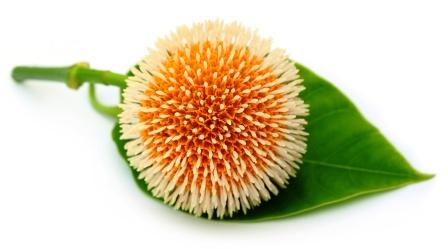
Chemical constituents, uses
Chemical constituents:
The dried bark of the tree contains alkaloids, steroids, reducing sugars, cinchoninic acid and tannins (about 4.6%). The ether-soluble alkaloid of the bark shows anti- bacterial activity.
Uses of Kadamba:
- The paste of the leaves of kadamba are tied over the wound or area affected with localized pain and swelling to reduce the complaints.
- The decoction of the bark of Neolamarckia cadamba is used to wash the infected wound.
- The decoction of the bark of the plant is used for gargling to treat mouth ulcers and inflammation of the gums.
- The decoction of kadamba is taken in a dose of 30-40 ml to treat diarrhea and irritable bowel syndrome.
- The powder of the bark of the tree is given with sugar candy in a dose of 5-6 g to treat nausea and vomiting.
- The juice of the fruit of kadamba is given in a dose of 40-50 ml to treat excessive sweating, thirst and burning sensation of the body.
- The decoction of the root of Neolamarckia cadamba is taken in dose of 30-40 ml to treat urinary tract infection and renal calculi.
- The decoction of the bark of the tree is consumed in a doses of 30-40 ml to treat fever.
- The paste of the bark of kadamba is applied over black spots and pimples.
- The fresh juice of the leaf is consumed in a dose of 10-15 ml to treat leucorrhoea and increased menstrual flow.
- The fresh juice of the fruit is useful to increase the breast milk in lactating women.
- The paste prepared from the bark of stem and leaf of kadamba is useful to treat pain, redness and itching due to insect bite.
Sanskrit verse
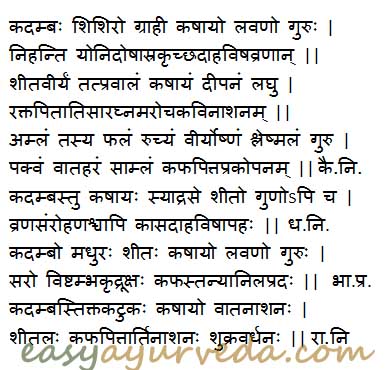
Benefits, Uses
Ayurvedic benefits of Kadamb:
Shishira – coolant
Grahi – absorbent, useful in diarrhea, IBS
Guru – heavy to digest
Vrana Ropana – heals wounds
Vishtambhakrut – causes constipation
Shukravardhana – improves sperm and semen quantity and quality
Indicated in –
Raktapitta –Bleeding disorders such as nasal bleeding, heavy periods, etc
Atisara – diarrhoea, dysentery
Arochaka – anorexia
Visha – Toxic conditions, poisoning
Kasa – cough, cold
Daha – burning sensation, as in gastritis, neuropathy, burning sensation in eyes etc
Unripe Fruit –
Amla – sour taste
Ruchya – improves taste, relieves anorexia.
Ushna – hot
Shleshmala – increases Kapha Dosha
Guru – heavy to digest
Ripe fruit –
Balances Vata and increases Kapha and Pitta Dosha.
Adverse action
No adverse reactions are seen or reported after using Kadamba alone or in formulations.
It causes constipation.
Interaction with medicines, supplements
Can this be used while taking Homeopathic medicine?
Yes. This product does not react with homeopathic medicine.
Can this medicine be continued while taking supplements like multivitamin tablets, Omega 3 fatty acids etc?
Yes. Generally, this product goes well with most dietary supplements. However, if you are taking more than one product per day, please consult your doctor for an opinion.
With western
medicines
Seek your
doctor’s advice if you are taking this product along with other western
(allopathic / modern) medicines. Some Ayurvedic herbs can interact with modern
medicine.
If both Ayurvedic and allopathic medicines are advised together, then it is
best to take Allopathic medicine first, wait for 30 minutes and then take the
Ayurvedic medicine.
Ayurvedic formulations
Formulations containing Kadamba:
Nyagrodhadi kashaya: It is an ayurvedic medicine in decoction form used for the treatment of all pitta ailments, wounds, raktapitta, thirst, diarrhea, fractures and vaginal diseases.
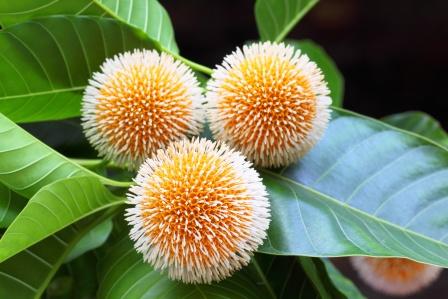
Grahanimihira taila: It is medicated oil useful to treat diarrhea, fever, cough, Asthma, Malabsorption syndrome, Hiccup, Jaundice, Urinary disorders, Thirst, colicky pain etc. This oil is used externally to treat wrinkled skin and external piles mass.
Glymnema tablet: This is a proprietary Ayurvedic medicine used for the management of diabetes.
Research
Research articles about Neolamarckia cadamba:
Analgesic, Anti- pyretic and Anti- inflammatory action: The methanol extract of Neolamarckia cadamba barks showed significant analgesic, anti-inflammatory and antipyretic activity. The anti-inflammatory activity using carrageenan and antipyretic activity in yeast-induced pyrexia in rats were also examined.
Anti- diabetic activity: Different doses of ethanolic fraction of stem bark of Neolarckia cadamba were evaluated for hypoglycemic activity in normal and alloxan diabetic rats. The oral administration of ethanolic extract of 0.5g/kg body weight exhibited a significant antihyperglycemic activity in alloxan diabetic rats, whereas in normal rats no hypoglycemic activity was observed.
Anti- ulcer and anti- oxidant property: The antiulcer activity of Aqueous and Methanolic extracts of Neolamarckia cadamba leaves and bark was investigated in Pylorus ligation and Aspirin induced ulcer models in Wistar albino rats. Aqueous extract of Neolamarckia cadamba leaves (AENCL) at dose of 200mg/kg and 400 mg/kg produced significant inhibition of gastric lesion induced by Pylorus ligation induced ulcer and Aspirin induced gastric ulcer. The AENCL (200 mg/kg and 400 mg/kg) showed significant (p<0.05) reduction in gastric volume, pH, free acidity, Total acidity, ulcer index and % ulcer inhibition was compared to control. Antioxidant activity was evaluated for free radical scavenging activity by DPPH assay which showed the significant antioxidant activity of AENCL and MENCL further supported their anti-ulcerogenic property.
Anti- fungal action: The present study was designed to evaluate the antifungal activity of alcoholic and aqueous extract from leaves and bark of Neolamarckia cadamba (Roxb.) Bosser using the paper disc diffusion method. All the extracts showed antifungal activity against the Aspergillus fumigatus and Candida albicans.. Leaves extract showed more activity than the bark extracts and it was comparable to the standard drug Ketoconazole.
Distribution
Himalayan and Western Ghat regions, Andaman islands etc.
Sthanika karma (Systemic Action)
External – External application relieves pain and edema. external application of its leaf paste is indicated in wounds. Leaf decoction can be used for gargling in mouth diseases. Its bark paste can be applied near the eye area in eye diseases.
Nervous System – Its decoction is indicated in various painful conditions
Digestive System – Being Bitter in taste it has carminative and digestive action, absorbent, reduce thirst and vomiting. Its fruit causes constipation. Its bark decoction is indicated in diarrhea, and malabsorption syndrome. Its fruit juice is indicated in thirst associated with fever. Its bark powder along with cumin powder and sugar can be given in vomiting
Circulatory System – It has styptic action, and reduces swelling. Indicated in oedema, and bleeding disorders
Respiratory System – Indicated in Cough
Excretory System – root is diuretic in nature. Indicated in Renal / Urinary calculi, urinary retention etc.
Reproductive system – Purify semen, breast milk and female genital tract. Its bark decoction is indicated in Shukrameha (Abnormal discharge of semen) and female reproductive diseases. Its leaf juice or decoction is good for leucorrhea
Skin – Bark paste is indicated in various skin diseases like blackish discoloration of skin (Nyacha, vyanga)
Tapakrama – Amapachana, reduce fever
Satmikarana – Improve body strength, Reduce poison
Author: Dr.B.K.Prashanth M.D (Ayu), Ph.D
E mail: [email protected]











2 comments
RAVI SOMABATTINI
good
Ajay Poharkar
Having gone through your article Kadamba:Neolamarckia cadamba, can be supposed to be potent alternative to ketokenazole and can replace many antiinflammatory chemicals from the market. It high time to promote Cadamba products and boost Indian economy. Well done keep on going with research on cadamba. All the best sir. . With regards
Dr.Ajay Poharkar
President
Maharashtra State Veterinary Council,
Nagpur India